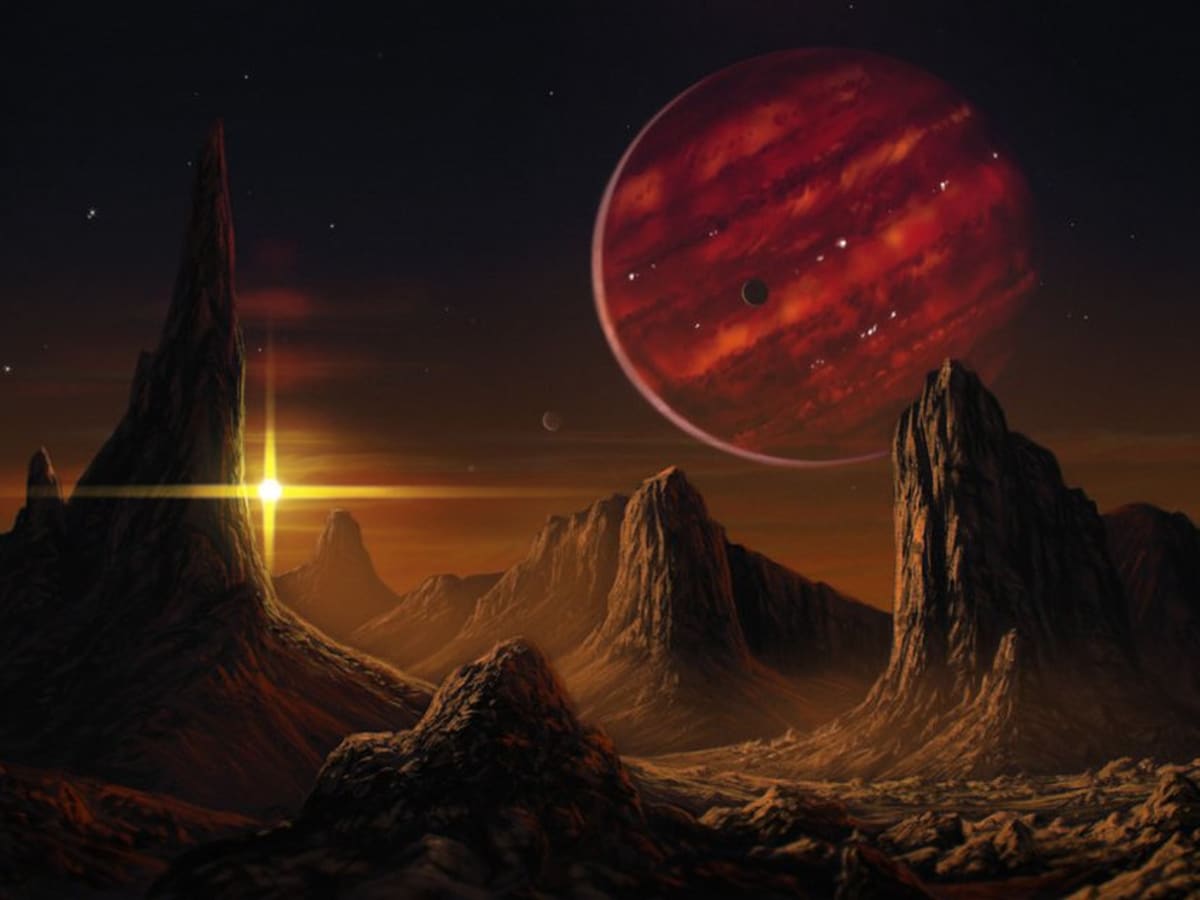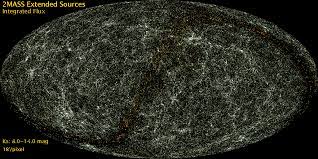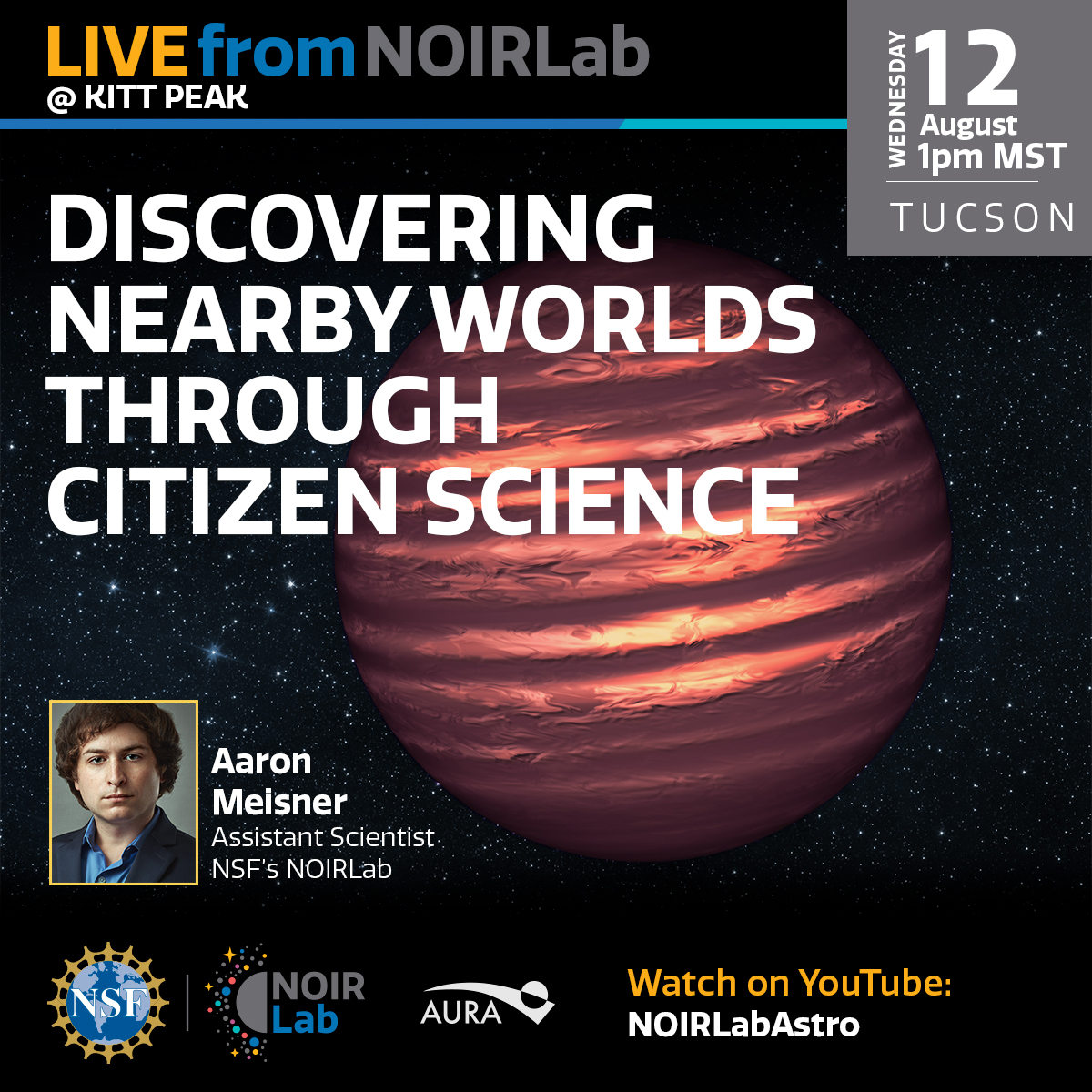Most people know that our Sun is pretty much a middle of the road star. Any star that is much more than 20 times the mass of our Sun is so big and unstable that it doesn’t last for very long. And any astronomic body that has much less than 1/20th our Sun’s mass won’t have enough pressure and temperature in its core to ignite hydrogen fusion, so they never shine as a star. Jupiter for example is the most massive of the planets, but since it only has 1/1000th the Sun’s mass it is a planet, not a star.

Beginning in the 1960s astronomers began to wonder if there could be objects out in the galaxy that were too small to be stars yet too big to be planets, a class that was eventually given the name Brown Dwarfs. Such objects would have masses in the range of 10-80 times Jupiter’s mass and are often described to be ‘failed stars’.

Since they don’t shine in visible wavelengths like real stars, and the closest could be light years away Astronomers knew that Brown Dwarfs were going to be very difficult to find. Brown Dwarfs wouldn’t be totally dark however, even the smallest would have some heat left over from their formation while the heaviest could even have a small amount of heavy hydrogen, that is deuterium fusion going on inside them. Because of this Brown Dwarfs would be visible in infrared (IR) light.

Infrared astronomy is difficult here on Earth’s surface however, because even a tiny amount of water vapour in the air blocks IR light. In the 1960s there simply weren’t any IR telescopes and it wasn’t until the 1990s that a few IR space telescopes were launched into orbit and the first IR telescopes were built on the tops of the highest Andes Mountains, the driest place on Earth.

In 1988 a star designated as GD 165 was discovered to have a very small companion star, designated as GD 165B, during a search for white dwarf stars. The light of GD 165B was barely in the visible red portion of the visible spectra and astronomers wondered if it might be the first known Brown Dwarf. The debate over GD 165B’s status continued for almost a decade until new telescopes conducting the Two Micron All Sky Survey (2MASS) discovered over a hundred similar objects, and so Brown Dwarfs became a new class of celestial object.

Today Brown Dwarfs have been classified into two spectral types, both below the familiar O, B, A, F, G, K, M classes of normal stars. The larger Brown Dwarfs, which have a strong lithium line in their spectra, are classified as “L” type. Since true stars burn their lithium very quickly the presence of lithium in a spectra is indicative of a brown dwarf.

In time some brown dwarfs were discovered whose surface temperatures were cooler than the L type, so cool that methane was discovered in their spectra, even L type dwarfs are too hot for chemicals to exist. So a new class of Brown Dwarf, the “T” class was created. Presently astronomers have identified nearly a thousand L type and about 350 T type Brown Dwarfs.

Since Brown Dwarfs generate little if any energy by fusion they really have no stable “Main Sequence” period in their lives but instead just continue to get cooler and cooler, eventually becoming so cool that they no longer even radiate in IR wavelengths. For that reason it was thought that it would be very difficult if not impossible to detect a Brown Dwarf that was more than a few billion years old.
But they may just have found one by ‘Accident’, or at least citizen scientist Dan Caselden seems to have found one and his finding it really was an accident. Caselden had written a computer program to search for Brown Dwarfs in the data collected by the Near Earth Object – Wide field Infrared Survey Explorer (NEO-WISE) satellite. In particular Caselden was looking for objects so close to our solar system that they would appear to move slightly against the background of more distant starts over the course of six months or a year. (NEO-WISE conducts a complete survey of the entire sky every six months)

Caselden was checking out one candidate for a close Brown Dwarf when he noticed another object nearby that was moving even faster. Its spectra didn’t look like that of a Brown Dwarf but Caselden decided he’d check it out.

Caselden’s discovery has now been given the official designation of WISEA J153429.75-104303.03 but it’s also known by its nickname of Accident. When examined more closely by powerful ground based telescopes Accident was found to be as cool as a T type Brown Dwarf but there was no trace of methane in its spectra. In fact there was no trace of carbon or any of the more massive elements like oxygen or sodium or iron. WISEA J153429.75-104303.03 appears to be made entirely of the elements hydrogen and helium.

That would indicate that Accident is old, very old, ten billion years old or older. You see, shortly after the big bang, when the first galaxies began to form the matter in the Universe was almost entirely hydrogen and helium. The heavier elements, like those that make up planets and even our our bodies were created inside the nuclear furnaces of the first generation of stars some 10 to 13 billion years ago.

So Accident may be a Brown Dwarf that was formed at the same time as the very first stars. If that is so then WISEA J153429.75-104303.03 may hold secrets within it that relate to how the first stars and galaxies came into being. WISEA J153429.75-104303.03 could even be the first in an entirely new class of Brown Dwarfs. So I guess it will be no accident if astronomers pay a great deal of attention to it in the years to come.
Accident brings another question to mind. Just how many Brown Dwarfs are there out there in our galaxy? So far we have only found around two thousand but they are all rather close, within 100 light years. We are still only beginning to get a feel for how common they are.

We do know that there are a lot more middle sized stars like our Sun than big, bright ones like Vega, and there are a lot more small, dim stars like Barnard’s star or Proxima Centauri than middling stars like our Sun. If you extrapolate from those facts then there could be a lot more Brown Dwarfs in the Milky Way than all of the real stars put together.

Think about that the next time you go out on a nice clear night to gaze up at the heavens.
